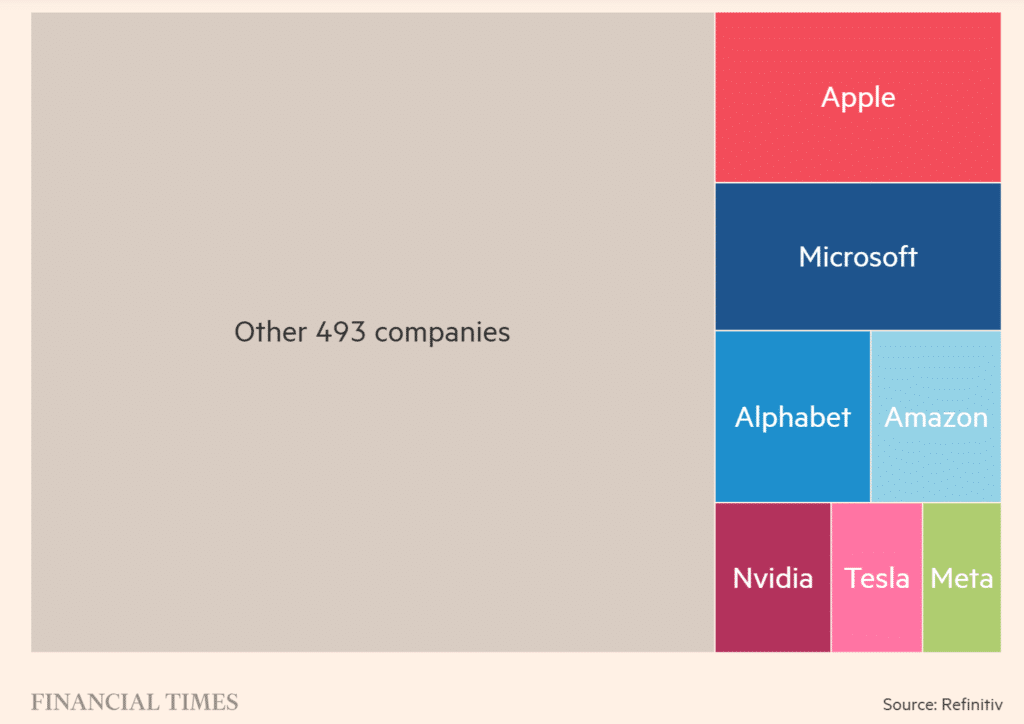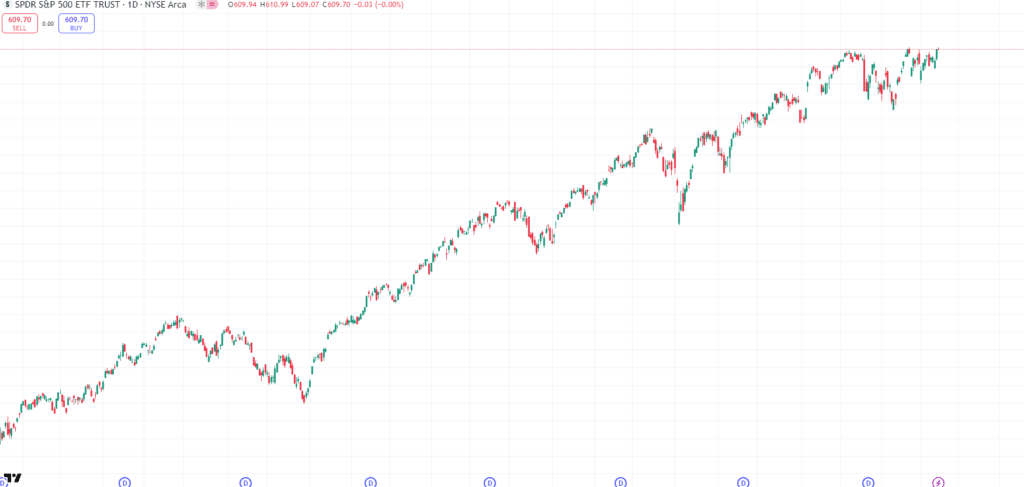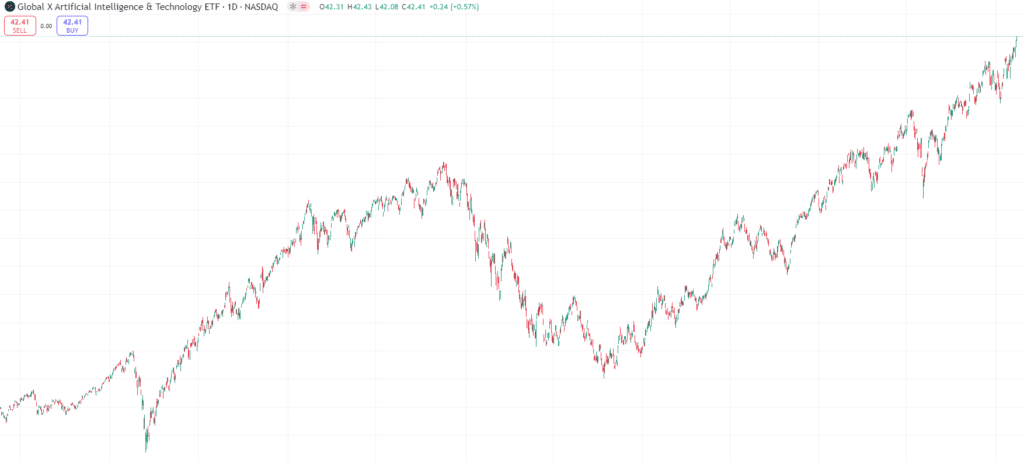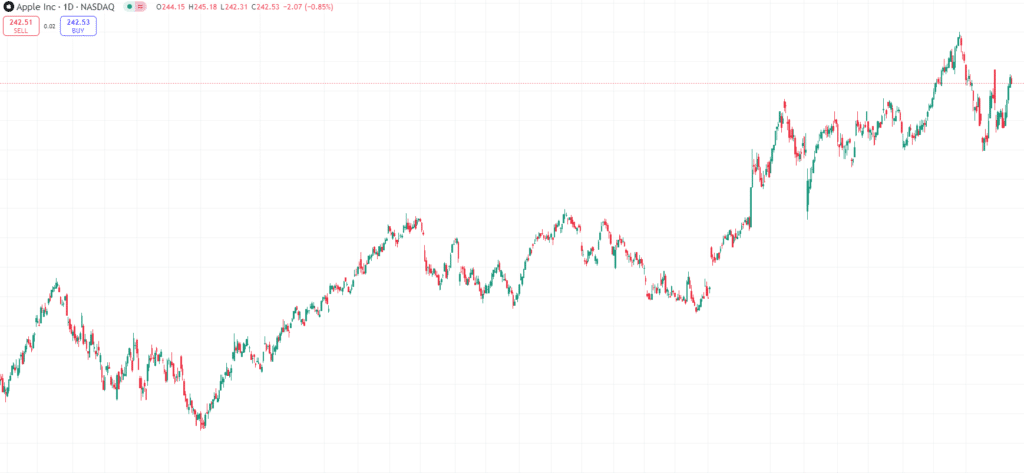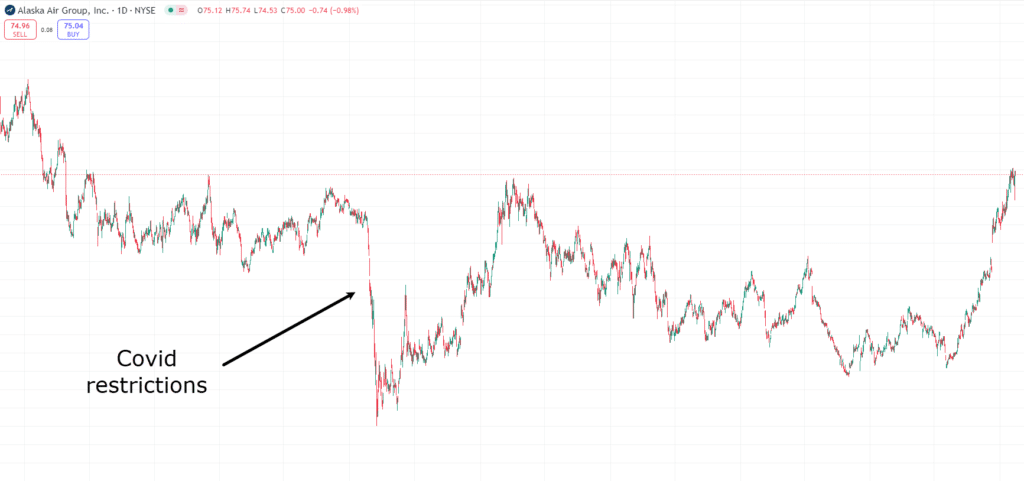Ever wondered whether you must put money into individual stocks or go for an ETF as an alternative?
It’s a standard query for each beginners and seasoned investors, and the reply isn’t all the time straightforward.
On the surface, stocks and ETFs seem similar, and it’s true they each offer you exposure to the market.
But beneath that surface are key differences that may shape your investing journey in another way.
Understanding them is crucial for making decisions that align along with your goals, risk tolerance, and the way involved you wish to be in managing your portfolio!
In this text, you’ll explore:
- What ETFs are and the way they work
- The different sorts of stocks, from small-to-large-cap firms
- Key differences between ETFs and stocks, including diversification, cost, and management styles.
- The risks involved with each investments and the way to manage them
- Real-life examples of various stocks and ETFs to see how they compare
- Easy methods to determine which option matches your lifestyle— and whether combining each is smart
By the top, you’ll higher understand which path suits you best.
Able to dive in?
What Are ETFs?
Well, when you’ve ever wondered how you possibly can put money into a big selection of stocks, bonds, or commodities without having to choose individual assets, that’s exactly what Exchange-Traded Funds (ETFs) can enable you to with.
In truth, ETFs are one of the popular investment tools today, offering a straightforward method to diversify your portfolio while keeping costs low.
Whether latest to investing or a seasoned trader, ETFs can play a beneficial role in your strategy.
So let’s break it down.
Understanding ETFs: How They Work
Consider an ETF as a basket of assets.
It may possibly hold stocks, bonds, commodities, and even a mixture of various investments.
It may very well be a bit like a playlist of stocks; as an alternative of picking individual songs (stocks), you may get something custom that aligns with a specific theme, reminiscent of tech stocks, healthcare, or the general market.
And the most effective part?
ETFs might be traded on the stock exchange – similar to individual stocks!
What does this mean?
You may buy and sell them throughout the trading day at their given market prices.
Make sense?
Good!
Now, let’s have a look at passive vs lively exchange-traded funds.
Passive vs. Energetic ETFs
Most ETFs follow a passive investment strategy, which tracks a particular index – just like the S&P 500 or NASDAQ-100.
A majority of these funds don’t attempt to beat the market; they simply mirror its performance.
This keeps costs low and makes them ideal for long-term investors while staying quite protected.
Then again, actively managed ETFs have skilled fund managers who make investment decisions to attempt to outperform a certain benchmark (a percentage, for instance.)
While this approach offers more flexibility, it often comes with higher fees and greater risks in comparison with passive ETFs.
That’s to not say it’s higher or worse!
These are different options for various scenarios.
Different Forms of ETFs
There are various different ETF varieties, each matching differing investment strategies.
Listed here are a few of the commonest:
- Broad Market ETFs – Track major indices just like the S&P 500 or MSCI World Index, exposing you to a whole bunch of firms directly.
- Sector ETFs – Concentrate on specific industries reminiscent of technology, healthcare, or energy, allowing you to speculate specifically market segments.
- International ETFs – Provide exposure to markets outside your own home country, including emerging and developed economies.
- Commodity ETFs – Allow you to put money into physical assets like gold, silver, or oil with no need to own the actual commodities.
- Bond ETFs – Offer access to government or corporate bonds, making them a well-liked selection for income-focused investors.
ETFs will also be weighted towards a specific goal, and magnificence boxes may help reflect which direction they’re aiming for…
Style Box – Typical Fund Investment Strategy:
Image by Morningstar.com
In truth, ETFs have exploded in popularity, reaching US$11.1 trillion in assets under management (AUM) as of December 31, 2023.
But why?
Why ETFs Are So Popular
Considered one of the most important benefits of ETFs is their cost efficiency.
They typically have lower fees than mutual funds, making them a sexy option for beginners and experienced investors.
Moreover, ETFs offer diversification by reducing the chance and spreading your investment across multiple assets.
Additionally they offer flexibility by allowing you to trade them like stocks, buying and selling anytime during market hours.
And at last, they provide transparency – most ETFs disclose their holdings every day, so you usually know what you’re investing in.
Right – now that you simply’ve taken a have a look at ETFs, let’s dive into stocks!
What Are Stocks?
In the event you’ve ever dreamed of owning an element of a significant company like Apple, Tesla, or Amazon, then stocks are a method to do this!
Share of the S&P 500 Index in response to market capitalization
Financialtimes.com
Stocks, also often known as shares or equities, represent ownership in an organization.
Whenever you buy a stock, you’re not only purchasing a chunk of paper or a number on a screen. You’re becoming a partial owner of that company.
How can that be, exactly?
Let’s break it down further.
Understanding Stocks: What Does It Mean to Own a Share?
As mentioned before, at its core, a ‘stock’ or ‘share’ is a chunk of an organization.
When a business wants to boost money, it could possibly sell shares to the general public through an initial public offering (IPO).
Investors can then buy and trade them on the stock market.
Owning a stock means you possess a claim to a portion of the corporate’s assets and earnings.
The more shares you own, the larger your stake in the corporate.
Now, stock ownership doesn’t mean you get to walk into the corporate’s headquarters and begin making decisions! (that’s reserved for major shareholders and board members – VIPs only!)
They do include benefits though…
The Advantages of Stock Ownership
Owning stocks generally is a powerful method to construct wealth over time.
Considered one of the first advantages is capital appreciation.
As an organization grows and increases in value, its stock price typically rises.
Investors who buy shares at a lower cost can later sell them for a profit, making stock ownership a sexy long-term investment strategy.
One other advantage is dividends.
Some firms, particularly well-established ones, distribute a portion of their profits to shareholders as regular money payments.
These dividends can provide investors with a gradual income stream, making them especially appealing for those seeking to generate passive income.
Moreover, owning certain varieties of stocks comes with voting rights.
Shareholders can participate in essential company decisions, reminiscent of electing board members or approving major corporate policies.
While individual investors may not have much influence (unless they own a big variety of shares,) this aspect of stock ownership gives investors a voice in the businesses they support.
These advantages, growth potential, income generation, and participation in corporate decision-making make stocks a vital a part of many investment strategies.
Nonetheless, additionally they include risks, which we’ll explore later within the comparison with ETFs.
Notably, not all stocks are in the identical league, either…
…I need to indicate you the way stocks are put into groups and settling once and for all between ETFs vs Stocks…
Different Forms of Stocks: Small, Medium, and Large-Cap Stocks
Stocks are sometimes categorized into small-, medium- or large-cap, based on their market capitalization (market cap).
An organization’s market cap represents its total value within the stock market.
These categories help investors understand the chance and growth potential of various stocks.
Large-Cap Stocks
These are well-established firms with a market cap of $10 billion or more.
Think of big firms like Apple, Microsoft, and Amazon.
These are known for his or her stability, strong financials, and consistent performance.
They have an inclination to be less volatile than smaller firms, making them a well-liked selection for long-term investors.
Many large-cap stocks also pay dividends, providing a gradual income stream along with potential growth.
Mid-Cap Stocks
These firms typically have a market cap between $2 billion and $10 billion.
Mid-cap stocks represent businesses which have moved beyond the startup phase but still have room for expansion.
They often offer a balance between the soundness of large-cap stocks and the expansion potential of small-cap stocks.
Examples include firms like Etsy or Zillow, which have grown substantially but will not be yet in the identical league as industry giants.
Small-Cap Stocks
With a market cap of lower than $2 billion, small-cap stocks are sometimes younger, fast-growing firms with high potential for expansion.
Nonetheless, additionally they include increased risk, as smaller businesses may struggle during economic downturns.
While some small-cap stocks evolve into mid- and large-cap firms, others may face challenges that limit their growth.
Investors drawn to small-cap stocks often seek high-reward opportunities but should be prepared for greater volatility.
Understanding these categories can enable you to structure your portfolios to match your risk tolerance and financial goals.
Whether you might be aiming for stability, growth, or a mixture of each, market cap plays an important role in shaping your investment decisions.
Okay… so… now for the massive query…
…which one is best?
ETFs vs Stocks?
Well, actually, that’s the improper query!
As an alternative of occupied with ‘higher’ or ‘worse’, deal with their differences…
Key Differences Between ETFs and Stocks
When deciding between ETFs and individual stocks, running through how they differ can enable you to select the most effective option to your goals.
While each offer opportunities for growth and generating wealth, they differ in diversification, risk, costs, and management style.
Diversification: Quick vs. Concentrated Exposure
Considered one of the most important benefits of ETFs is how diverse they might be.
A single ETF can hold dozens, a whole bunch, and even 1000’s of stocks, spreading risk across multiple firms, industries, and even countries.
This makes ETFs an awesome selection for investors searching for broad market exposure without the necessity to research and pick individual stocks.
But what if a person stock inside the ETF performs exceptionally well?
While it could help the performance of the ETF, it wouldn’t have the identical impact as when you’d simply invested in the person stock.
This leads me to the subject of shopping for individual stocks – investing in a single company at a time.
While this may result in substantial gains if the corporate performs well, it also exposes the investor to higher risks if the business faces challenges.
Unlike ETFs, which balance performance across multiple assets, a stock’s success or failure depends entirely on its company’s growth and stability.
So, how do the risks stack up?
Risk Profile: Stability vs. Potential Volatility
ETFs generally carry lower risk in comparison with individual stocks.
As they hold multiple assets, the decline of 1 company can often be offset by higher performance from others inside the ETF.
This built-in risk management makes ETFs a more stable option, especially for conservative or latest investors.
Stocks, alternatively, are more volatile by nature.
Prices can fluctuate significantly based on company earnings, market sentiment, and external events.
While this volatility presents greater risk, it also creates opportunities for higher returns if an investor picks a strong-performing stock.
Those comfortable with risk and willing to actively monitor their investments may profit from stock trading, however it requires careful research and strategy.
Costs: Management Fees vs. Transaction Costs
Investing in ETFs often involves expense ratios, that are small annual management fees taken as a percentage of the fund’s assets.
While these fees are sometimes minimal (starting from 0.03% to 1% most often), they still reduce overall returns over time.
Individual stocks, against this, would not have such ongoing management fees.
Once an investor purchases a stock, they own it outright without additional charges beyond brokerage fees or commissions (which are actually often negligible because of commission-free trading platforms).
Nonetheless, constructing a well-diversified portfolio with stocks may require multiple transactions, resulting in higher upfront costs in comparison with buying a single ETF.
Management Style: Passive vs. Energetic Investing
ETFs are available in each passively managed and actively managed types.
Most ETFs track an index, reminiscent of the S&P 500, meaning investors should do little to no lively decision-making.
Passive investing is great for many who prefer a hands-off approach while still benefiting from long-term market growth.
Some ETFs are actively managed, meaning fund managers make regular buy/sell decisions.
They charge for his or her expertise, though, so actively managed ETFs are inclined to have higher fees.
Compare this passive approach to investing in stocks, nonetheless, which definitely requires lively decision-making.
Investors must research firms, track financial reports, and judge when to purchase or sell based on market conditions.
While this approach offers more control, it also demands significant effort and time, making it higher suited for many who enjoy stock evaluation and market participation.
Let’s take a have a look at some real chart examples of ETFs and Stocks and see how they compare to at least one one other.
ETF and Stock Charts
SPY ETF Each day Chart:
That is an example of the SPDR S&P 500 ETF Trust.
This ETF goals to carry a portfolio of common stocks inside the S&P 500—offering diversification across multiple market sectors.
It’s a large fund with the important thing goal of getting a mix of firms that provide good diversification across the market.
The SPY ETF is a wonderful example of a protected fund that can proceed to yield around that benchmark 10% per 12 months over the long run.
That’s a wonderful option for many who desire a passive investment that follows the world’s leading firms.
Let’s take a have a look at one other ETF chart…
Global X Artificial Intelligence & Technology ETF (AIQ):
Here is one other ETF, nonetheless, this time, it’s targeting a rather more unique and fewer diverse portfolio.
The fund goals to speculate at the least 80% of its total assets in firms and sectors involved in artificial intelligence and technology.
That is an awesome example of an ETF that may align with a current bias of where things is likely to be heading, allowing you to still make investment decisions based on up-and-coming industries.
It’s an example of finding an edge – targeting a growth sector with higher risk than a balanced, protected ETF like SPY.
This isn’t to say that this ETF shouldn’t be protected, it still comprises a variety of firms to be able to help diversify the chance.
As an alternative, risks might come from unexpected circumstances, reminiscent of governments banning AI technology or putting major restrictions on the technology around it.
While unlikely, the chance needs to be regarded as if the sector performs poorly, between ETFs vs Stocks, the ETF will reflect that.
Now, let’s have a look at some individual stocks…
Apple Inc Each day Chart (AAPL):
Let’s take Apple, for instance.
On the chart, you possibly can see it’s a rather more reactive-looking chart in comparison with the regular growth of the S&P500.
Yet, they’re still somewhat similar, right?
That’s since the SPY ETF actually holds around 7% of its holdings as Apple shares.
As Apple is certainly one of the most important firms out there, it is smart to have it in an ETF based on the S&P 500.
The difference here is that any market fluctuations inside Apple, good or bad, will probably be reflected within the share price and, hence, your portfolio value.
There is no such thing as a smoothing out because of other firms across the sector.
This investment is entirely depending on Apple’s performance.
Let’s have a look at a smaller company to match…
Alaska Air Group (ALK):
Here is the Alaska Air Group chart, with a market cap within the $9 Billion range.
This places it at the upper end of a mid-cap company’s $2-10 Billion dollar market cap range.
Now, take a while to note the differences in charts.
There are numerous peaks and troughs, and the worth appears to be rather more volatile.
Covid had a devastating impact on airlines as borders were shut and covid restrictions got here into place.
You may see it reflected within the share price, together with the time it took for the worth to get well.
So chances are you’ll be pondering, “Well, it’s not value even taking a look at these types of firms…”
Nonetheless, firms with strong foundations that undergo a transient market downside often provide good buying opportunities.
Let’s assume you made the decision to purchase ALK shares when the worth dropped in the course of the COVID lockdowns with the knowledge that the airline would eventually be back up and running.
You’d have had a 280% share price rise from March 2020 to the present date.
That could be a significant increase.
What’s my point?
Picking individual stocks permits you to pick firms that you simply consider are undervalued.
It permits you to make your individual decisions based in your beliefs and research in regards to the economy, market, and where you think that value will probably be found.
In these scenarios, it’s rather more critical for detailed evaluation and research to be done while timing the market also comes into play.
Nonetheless, the gains might be so much higher than those of ETFs.
So, let’s dive into what style is correct for you.
Are ETFs for you?
ETFs is likely to be the proper fit in case your lifestyle revolves around a gradual and low-maintenance approach to investing.
Imagine you’re someone with a busy schedule, and perhaps you’re juggling work, family, and private projects.
You don’t have the time to trace individual stocks or continually monitor the market.
On this case, ETFs offer the peace of mind that your investments are diversified, meaning you don’t should spend time picking and monitoring stocks.
As an alternative, you possibly can set your portfolio and let it grow with minimal involvement.
Or chances are you’ll value long-term stability over the fun of chasing high-risk, high-reward opportunities.
Again, ETFs align perfectly with that mindset.
They spread your investment across many alternative firms, smoothing out the risks related to any single stock.
This implies you don’t should worry about being overly impacted by the sudden price swings of 1 company’s stock, allowing you to rest easier knowing your portfolio is less volatile.
Between ETFs vs Stocks, ETFs might be a wonderful selection for those planning for the longer term, whether it’s retirement, buying a house, or just growing wealth over time.
It can’t be understated how long-term ETF investment can result in substantial financial growth.
They can help you construct a portfolio that steadily appreciates with no need to be continually hands-on.
You don’t must be glued to your computer screen, waiting for the subsequent big opportunity.
With ETFs, you possibly can deal with what matters most to you while your investments deal with themselves within the background.
So, suppose your ideal lifestyle involves less stress, more freedom, and the flexibility to speculate without continually managing individual stocks. In that case, ETFs can enable you to create the financial foundation you should live that life.
Sounds great right
But what about stocks?
ETFs vs Stocks: When to decide on Stocks?
Individual stocks is likely to be the proper selection in case your lifestyle thrives on being hands-on and also you’re able to manage your investments actively.
Selecting stocks offers a dynamic, engaging experience if you might have the time and energy to research and analyze firms.
It permits you to put money into businesses you suspect have growth potential.
In the event you enjoy making informed decisions and need to align your investments along with your beliefs about an organization’s potential, stocks offer you the liberty to achieve this.
The rewards aren’t just financial. They will also be mentally fulfilling.
There’s a novel satisfaction in researching firms, understanding their growth potential, and seeing your investment decisions come to life, even when the trail is bumpy.
For those comfortable with volatility, individual stocks provide the chance to experience more significant ups and downs, reflecting an organization’s performance.
But remember, with that potential for higher rewards comes the necessity to manage your risk actively.
Stocks require attention and research, however the sky is the limit for the fitting investment mindset, with greater potential for higher returns and a more rewarding investing experience than ETFs.
Conclusion
In conclusion, selecting between ETFs vs Stocks doesn’t should be overwhelming.
It’s about understanding what each offers and the way they align along with your goals and lifestyle.
By now, you must have a clearer picture of how each investment options work and when one is likely to be more suitable than the opposite.
Throughout this text, you’ve explored:
- What ETFs are and the way they supply diversification
- What stocks represent and the differences between small-, mid-, and large-cap stocks
- The most important differences between ETFs and stocks in diversification, risk, costs, and management style
- When ETFs might suit a hands-off, long-term approach to investing
- When stocks may very well be ideal for more control and better growth potential
- Real-life examples showing how ETFs and stocks perform in numerous scenarios
Investing shouldn’t be one-size-fits-all.
What works for another person may not suit you.
But by understanding these concepts, you’re higher equipped to make informed decisions that align along with your financial goals and private preferences.
So, what resonates with you more?
The diversified, set-it-and-forget-it nature of ETFs, or the hands-on potential of individual stocks?
Perhaps a mixture of each is the fitting fit?
Let me know within the comments below about your experiences with ETFs and stocks!
